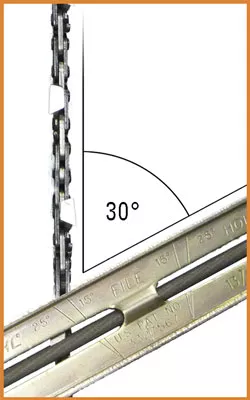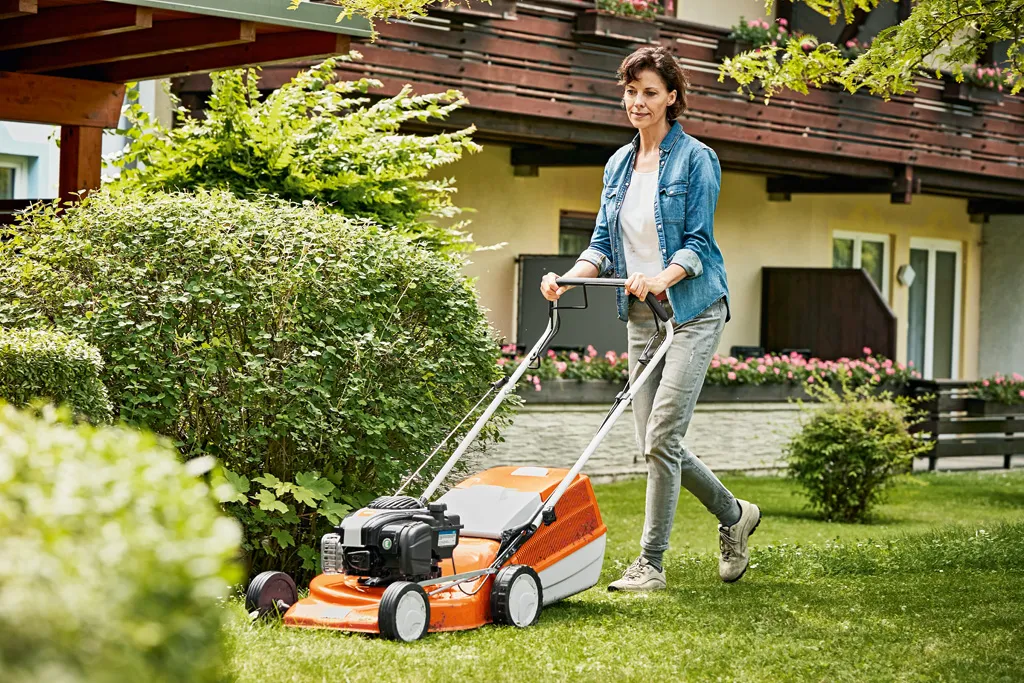Advanced Chain Sharpening Techniques
Any chain saw regardless of make, model or age, is only as good as the chain that is mounted on it. A properly sharpened chain will have the single biggest impact on overall cutting performance and operator safety. Unfortunately, chain sharpening is one of the least understood aspects of chain saw maintenance. Becoming proficient in chain sharpening means you must have an understanding of how a chain actually functions.
SAW CHAIN IS COMPRISED OF THREE COMPONENTS:
Cutters. This component is responsible for severing the wood fiber and removing the wood chip. It is the focal point when sharpening a chain.
Drive link. The drive link transmits the power of the engine to the chain. The drive link engages the sprocket on the engine and the sprocket on the guide bar tip.
Tie straps. The tie straps join all the pieces together and are the main part of the chain that makes contact with the guide bar.

The cutter is made up of the cutting edge and a depth gauge (commonly referred to as a raker). The depth gauge controls how large a “bite” the cutter will take. If the depth gauge is set too high, the cutter will not remove much wood and will cut very slowly. If the depth gauge is set too low, the cutter will grab too much wood, which makes the chain very dangerous and increases the chance of kickback. On a saw chain, cutters are positioned so that each right-hand cutter alternates with a left-hand cutter.
Tools required to properly sharpen a chain include: a round file, a file guide, a flat file and depth gauge tool. Different sizes and types of chains require different sizes and types of files. Before attempting to sharpen your chain, consult with your local STIHL Dealer to make sure that you have the correct tools for the job. Generally speaking, a homeowner is going to use a different style of chain than a professional faller, and each will utilize different techniques to sharpen their chains. A professional faller will use a chisel style cutter chain (RS type). This type of chain cuts approximately 25% faster than a round covered chain (RM type), but will dull quicker if subjected to dirt and debris. Properly sharpened square chisel chain requires precise corner alignment and filing angles. The level of accuracy needed is hard to duplicate by hand and is best accomplished using a chain grinder. Round filed chain is more common for consumer chain and a lot easier to sharpen. Sharpening a chain with a round file requires the proper size file and guide, and the correct filing angles. Your STIHL Dealer can provide you with the correct information to get you started.

The first step when sharpening a chain is to make sure that you are wearing gloves and eye protection. Visually inspect the chain to find the dullest or shortest cutter, as this will be your starting point. Sharpen the cutter to the correct angle (usually 30 degrees) and then file all cutters to match its length. When filing a chain, sharpen all cutters on one side of the chain first, and then sharpen the cutters facing the opposite direction next. Always file from the inside of the cutter to the outside corner. Only sharpen on the forward stroke of the file and do not drag the file backwards against the cutter. Once all of the cutters have been sharpened, you will need to go back and check the depth gauge. There are different file guides used to check and adjust the depth gauge. Place the guide on the top of the cutter. If the depth gauge sticks up above the file guide, file it level with a flat file and then lightly file the leading edge to bring the depth gauge profile back to its original shape.
Trying to cut wood with a dull or incorrectly sharpened chain results in a loss of power and cutting speed, an increase in fuel consumption, higher rate of wear on the guide bar, sprocket and clutch assembly and operator fatigue. A sharp chain should feed itself into the wood with very little pressure being applied. If an operator has to force the chain saw during a cut, the chain must be inspected for dull cutters or incorrect depth gauge setting.









